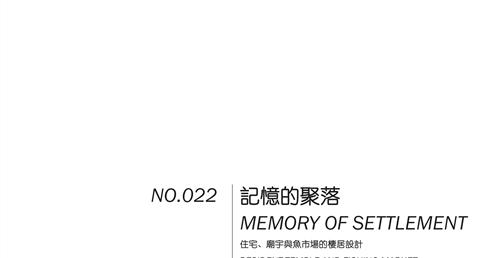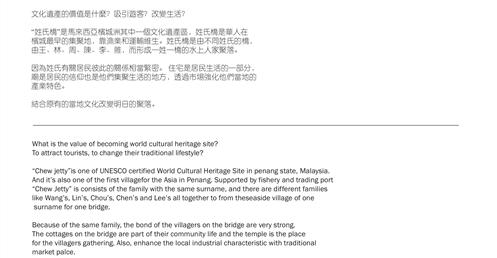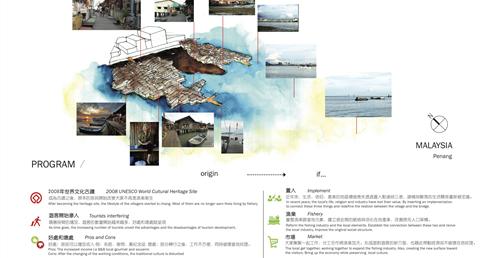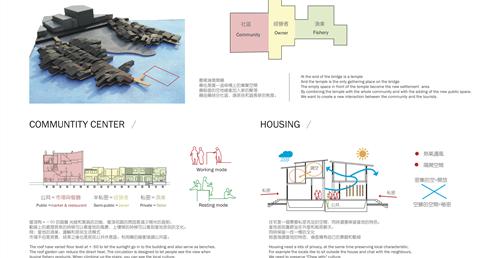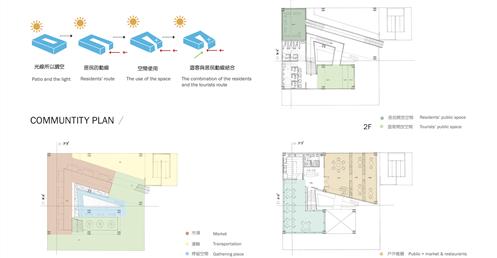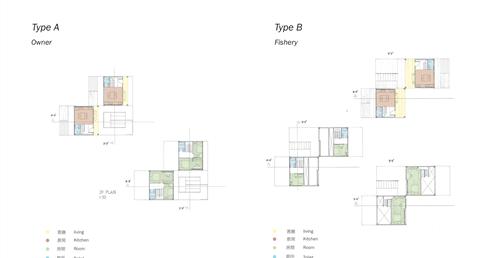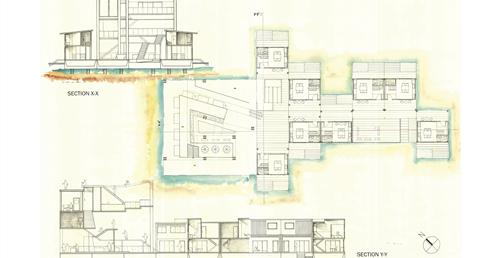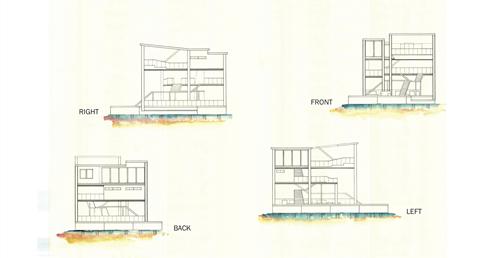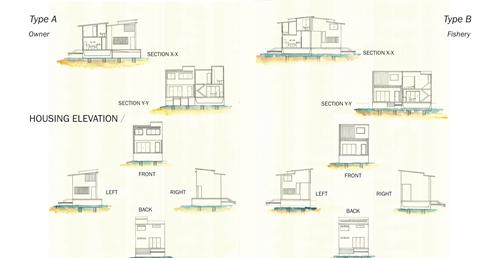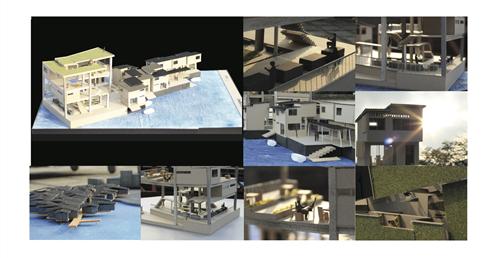記憶的聚落
住宅、廟宇與魚市場的棲居設計
中原建築 伍家慶 2015年 二年級作品
Memory of settlement
2015
Kevin Ng Kah Heng
Architecture School of Chung Yuan Christian University
文化遺產的價值是什麼?吸引遊客?改變生活?
姓氏橋是馬來西亞檳城洲其中一個文化遺產區,姓氏橋是華人在
檳城最早的集聚地,靠漁業和運輸維生。形成一姓一橋水上人家聚落。 。
結合原有的當地文化改變明日的聚落。
What is the value that lies in a world’s cultural heritage? It may attract tourists but it may change the life of local residents as well.
Clan Jetties, a UNESCO world heritage, is the oldest Chinese settlement in Penang, Malaysia. This waterfront society is home to houses on stilts of various Chinese clans with one clan at each jetty. Local residents make their living by fishing and transportation.
This is a project that intends to transform a local settlement but conserve local culture at the same time.
透過真實基地,探討當地人口組成的變化,與不同的社區公共區域之間產生的連
結。從住宅單元連結信仰社區交流中心,加入置入點,讓橋與聚落的生活關係重
新被定義。藉由市場集聚大家一起工作,分工合作將漁業加大。形成面對遊客的新介面,也藉此帶動經濟卻不破壞在地紋理。此區也是世界文化古蹟的尾端,需有停留空間餐廳動線可以看到當地漁業的生活。藉由重整漁業跟當地元素,建立彼此間的脈絡與活化在地產業,改善人口架構與聚落型態。
This is a real case that allows us to see how the demographic change at a real historical site develops connection with different public areas in the community. The placement of a linking point between all house units and the community faith center redefines the connection of way of living for each jetty and the entire settlement. The fish market gathers people to work together and the labor division can expand the scale of the fishing economy. That can become a new front facing tourists and boost local economy without hurting the local and cultural heritage. Clan Jetties is at the end of the trail of this World Heritage Site. It needs to have a place for people to stay and keep the circulation flows so that tourists can have a peek at local fishery. By reorganization of the local fishery and the local cultural elements, this design intends to achieve re-establishment of local culture, revitalization of local industry, and invigoration of local population structure and settlement.
住宅、廟宇與魚市場的棲居設計
中原建築 伍家慶 2015年 二年級作品
Memory of settlement
2015
Kevin Ng Kah Heng
Architecture School of Chung Yuan Christian University
文化遺產的價值是什麼?吸引遊客?改變生活?
姓氏橋是馬來西亞檳城洲其中一個文化遺產區,姓氏橋是華人在
檳城最早的集聚地,靠漁業和運輸維生。形成一姓一橋水上人家聚落。 。
結合原有的當地文化改變明日的聚落。
What is the value that lies in a world’s cultural heritage? It may attract tourists but it may change the life of local residents as well.
Clan Jetties, a UNESCO world heritage, is the oldest Chinese settlement in Penang, Malaysia. This waterfront society is home to houses on stilts of various Chinese clans with one clan at each jetty. Local residents make their living by fishing and transportation.
This is a project that intends to transform a local settlement but conserve local culture at the same time.
透過真實基地,探討當地人口組成的變化,與不同的社區公共區域之間產生的連
結。從住宅單元連結信仰社區交流中心,加入置入點,讓橋與聚落的生活關係重
新被定義。藉由市場集聚大家一起工作,分工合作將漁業加大。形成面對遊客的新介面,也藉此帶動經濟卻不破壞在地紋理。此區也是世界文化古蹟的尾端,需有停留空間餐廳動線可以看到當地漁業的生活。藉由重整漁業跟當地元素,建立彼此間的脈絡與活化在地產業,改善人口架構與聚落型態。
This is a real case that allows us to see how the demographic change at a real historical site develops connection with different public areas in the community. The placement of a linking point between all house units and the community faith center redefines the connection of way of living for each jetty and the entire settlement. The fish market gathers people to work together and the labor division can expand the scale of the fishing economy. That can become a new front facing tourists and boost local economy without hurting the local and cultural heritage. Clan Jetties is at the end of the trail of this World Heritage Site. It needs to have a place for people to stay and keep the circulation flows so that tourists can have a peek at local fishery. By reorganization of the local fishery and the local cultural elements, this design intends to achieve re-establishment of local culture, revitalization of local industry, and invigoration of local population structure and settlement.
